Tuesday Poem
Untitled
Late one night in my office
one mile from home, I stared
out my window in an insomniac haze.
Remember how crazed I used to be?
Turns out eight hours of sleep
is the only vision quest I need.
Anyhow, as I stared out the window,
I saw a transformer sizzle
And spark down the block.
Accidental and gorgeous fireworks.
Then that transformer boomed
and turned the neighborhood
Into one large and powerless room.
In five minutes, the closed supermarket
parking lot below me was crowded
with dozens of black teens and young
adults.
A sudden party! And the bass that shook
their car windows shook my office
window!
Then three minutes after the party started,
six police cars pulled into the parking lot.
Oh, shit! Oh, shit! I wondered if somebody
was going to get shot! But the cops stayed
in their cars, content to just be reminders
of more dangerous possibilities,
while the black teens behaved like teens.
Twenty minutes later, the power came back.
I was surprised it had been fixed
so quickly. Soon enough, the black kids
vacated the lot. And the cops did too.
It was one of those city nights where
Bad things could have happened.
But it was good things that shook the air.
The music and car engines and laughter
singing only about love, not disaster.
by Sherman Alexie
from You Don’t Have To Say You Love Me
Little Brown, 2017
What It Means if You Have Borderline High Cholesterol—And What to Do About It
Sarah Klein in Time Magazine:
 Almost 25 million adults in the U.S. have high cholesterol, which puts them at a higher risk for a heart attack or stroke in the next decade. But a much bigger portion have what’s called borderline high cholesterol, an in-between place that’s not quite high, but not quite within a normal range. Here’s what to know about borderline cholesterol.
Almost 25 million adults in the U.S. have high cholesterol, which puts them at a higher risk for a heart attack or stroke in the next decade. But a much bigger portion have what’s called borderline high cholesterol, an in-between place that’s not quite high, but not quite within a normal range. Here’s what to know about borderline cholesterol.
High cholesterol is defined as having a total cholesterol number of 240 mg/dL or above. Someone has borderline cholesterol, meanwhile, when their total cholesterol is in the 200 to 239 range.
“We create these thresholds—which are admittedly somewhat artificial—to classify people so we can understand if we need to do further analysis or assessment to understand their risk for cardiovascular disease,” says Dr. Donald Lloyd-Jones, past president of the American Heart Association and a professor of cardiology and the chair of preventive medicine at Northwestern University Feinberg School of Medicine. There’s some flexibility: Some people may be completely healthy with a total cholesterol level of 235, while others could be at risk at 205. It depends on a person’s other risk factors. But broadly speaking, these thresholds help doctors make decisions about patient care.
More here.
Scientists made a six-legged mouse embryo — here’s why
Sara Reardon in Nature:
 This six-legged animal isn’t an insect: it’s a mouse with two extra limbs where its genitals should be. Research on this genetically engineered rodent, which was published on 20 March in Nature Communications1, has revealed a way in which changes in DNA’s 3D structure can affect how embryos develop. Developmental biologist Moisés Mallo, at the Gulbenkian Science Institute in Oeiras, Portugal, and his colleagues were studying one of the receptor proteins, Tgfbr1, in a signalling pathway that is involved in many aspects of embryonic development. The scientists inactivated the Tgfbr1 gene in mouse embryos about halfway through development to see how the change affected spinal-cord development. Then, Mallo’s graduate student, Anastasiia Lozovska, came to his office to tell him she’d found that one of the bioengineered embryos had genitals that looked similar to two extra hind limbs. Her finding sent the research down an unexpected path. “I didn’t choose the project, the project chose me,” Mallo says.
This six-legged animal isn’t an insect: it’s a mouse with two extra limbs where its genitals should be. Research on this genetically engineered rodent, which was published on 20 March in Nature Communications1, has revealed a way in which changes in DNA’s 3D structure can affect how embryos develop. Developmental biologist Moisés Mallo, at the Gulbenkian Science Institute in Oeiras, Portugal, and his colleagues were studying one of the receptor proteins, Tgfbr1, in a signalling pathway that is involved in many aspects of embryonic development. The scientists inactivated the Tgfbr1 gene in mouse embryos about halfway through development to see how the change affected spinal-cord development. Then, Mallo’s graduate student, Anastasiia Lozovska, came to his office to tell him she’d found that one of the bioengineered embryos had genitals that looked similar to two extra hind limbs. Her finding sent the research down an unexpected path. “I didn’t choose the project, the project chose me,” Mallo says.
Researchers have long known that, in most four-limbed animals, both the external genitalia (penis or clitoris) and hind limbs develop from the same primordial structures. When Mallo’s team looked further into the six-legged mouse phenomenon, they found that Tgfbr1 directs these structures to become either genitalia or limbs by altering the way that DNA folds in the structure’s cells. Deactivating the protein changed the activity of other genes, resulting in extra limbs and no true external genitalia.
More here.
Monday, April 1, 2024
The Trouble With Rights
by Martin Butler
Recently I read an article which included the idea that nature can have rights, something I have to admit I had not come across before, despite a keen awareness that nature needs protecting. I discovered that this is a well-established point of view – there is a lengthy Wikipedia page on the topic. I found this rather odd – it seemed a misplaced use of the concept of a right. But it made me reflect that in the modern world the possession of rights is one of the few ethical ideals that is taken seriously wherever you happen to be on the political spectrum, so it’s understandable why those who want to protect nature might adopt the language of rights.

From the right to bear arms to transgender rights, rights matter across the board, having an authority that religious commandments, the claims of ‘social justice’, and other varieties of moral prescription seem to lack. The idea that we have rights is an unquestioned certainty, but rights are also often a source of considerable conflict in the modern world. Which rights do we actually possess? Do animals have rights? How can conflicting rights, which are presented as fixed, be reconciled? Do some rights automatically trump other rights? If so, how could a hierarchy of rights be devised? The language of rights, it seems, very quickly leads to dogmatism and impasse. Jeremy Bentham certainly had no time for rights:
Natural rights is simply nonsense: natural and imprescriptible rights, rhetorical nonsense – nonsense on stilts.[1]
He wrote this in an essay entitled “Anarchical Fallacies; being an examination of the Declaration of Rights issued during the French Revolution”(1796). Interestingly, Bentham’s arguments have something in common with Karl Marx’s and Edmund Burke’s critiques of rights – and these two philosophers are at opposite ends of the political divide. Read more »
Joy in Repetition
by Derek Neal
 I was listening to “My Turn Now” from Atlantic Starr’s 1980 album Radiant when my friend complained that “they just say the same thing over and over again.” This is true. The part of the song that elicited this comment was near the end, when the lead singer and the backup vocalists engage in a call and response:
I was listening to “My Turn Now” from Atlantic Starr’s 1980 album Radiant when my friend complained that “they just say the same thing over and over again.” This is true. The part of the song that elicited this comment was near the end, when the lead singer and the backup vocalists engage in a call and response:
(Baby, it’s my turn)
Oh, it is my turn now
It’s my turn now
(It’s my turn now)
(Baby, it’s my turn)
I want the world to know
That love is the love you sow
(It’s my turn now)
This is, of course, what music does. Words are repeated, phrases are repeated, melodies are repeated, and the song gets stuck in our heads and we repeat it to ourselves. Techno music, which is one of my favorite genres, is often criticized as being too repetitive, usually due to its ever-present bass drum; what some listeners fail to realize, however, is that once you hear the bass drum enough you stop hearing it. It acts as a sort of metronome, keeping time while melodies, harmonies, and rhythmic elements give shape to the music. When something is repeated, its meaning changes. I’ll say it again: when something is repeated, its meaning changes. Read more »
Perceptions
 Sughra Raza. Random Street Composition While Walking Home, March 2, 2024.
Sughra Raza. Random Street Composition While Walking Home, March 2, 2024.
Digital photograph.
Norm(s)!
by Mike O’Brien
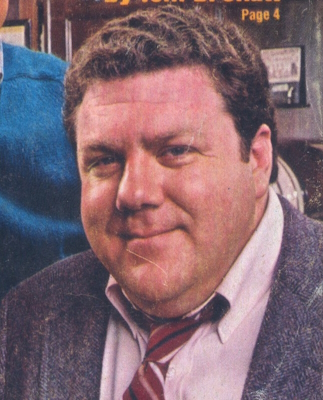
What a week it has been. I’m not referring to military outrages, legal bombshells or pop-cultural bombshells. Rather, I’m referring to the dozens of intensive (and intensely rewarding!) hours I spent catching up on my preferred corner of academic research: the empirical investigation of animal normativity. Big things are happening in this domain. Big things have been happening there for decades, but the pace has noticeably increased in the last two years, at least judging by the output of the authors I tend to follow.
Some of my readers may know that I am particularly interested in the work of Kristin Andrews, currently at York University in Toronto. I have covered some publications of hers in previous columns, most recently 2022’s “A pluralistic framework for the psychology of norms“, co-written with Evan Westra. Since then, no fewer than nine publications have been added to Andrews’ website, many co-authored with other movers and shakers in the burgeoning animal normativity scene. In addition to illustrating the current state of the field, the historical references in these recent publications (if I can call the 1970s and 1990s “historical” without sending a chill up the spines of my peers and elders) also trace the long trajectory of de-anthropocentrizing projects in cognitive and behavioural sciences. A particularly interesting antecedent is 1990’s “Towards a neurobiological theory of consciousness” by Francis Crick (!) and Christof Koch, which called for a program of research into consciousness that presupposed a neuronal rather than linguistic basis for conscious phenomena. A fortuitous proposal, in retrospect, accompanied by some rather interesting specific hypotheses about the underlying neuronal mechanics. Koch’s confidence in the material tractability of consciousness recently cost him a case of wine (presumably now sitting in David Chalmers’ cellar), although he should not be faulted for the mind-sharpening practice of attaching stakes to one’s bets.
To recap my previous coverage of Andrews’ work: In “A pluralistic framework…“, Andrews and Westra sketched out a conceptual toolkit for a research program that could investigate normativity in non-human animals. The main thrust of this project is to remove heavily concept-laden and human-specific definitions and criteria, and in their stead provide minimal, instrumentally serviceable tools that can be applied to a wide variety of animal behaviours. Read more »
Don’t “both-sides” the impoverishment of political discourse
by Joseph Shieber
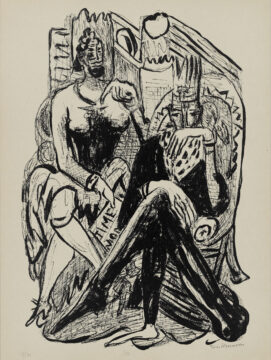
Two of the happy discoveries I’ve made in the last two months or so are Brian Klaas’s and Dan Williams’s Substacks. Klaas is an American political scientist who has made his career in the UK, while Williams is a UK philosopher. Both writers have overlapping interests — chiefly, perhaps, in the role of tribal signaling in the formation of political beliefs.
I generally find myself in agreement with much of what both Klaas and Williams write. For this reason, it was significant for me to read posts by each of them, within days of each other, that I found deeply wrong. Both posts circled around the topic of the impoverishment of public discourse, though each post approached the topic from a distinct perspective.
Klaas’s post, “The Death of Serious Politics,” decries the way in which politics “has become subsumed by scandals, outrage, discussions of rhetoric, culture wars, and, above all, focusing on who’s winning and losing at politics rather than who’s winning or losing at solving problems.”
Klaas rehearses the typical candidates for blame. He claims that “We’re governed by narcissistic political influencers who trade in the currencies of eyeballs and clicks, rather than measuring their acheivements by, say, children lifted out of poverty.” He laments “how many of our collective brain cells have been commandeered after being poisoned by Trump’s hateful venom.” He also targets “the full-blown, profit-seeking news industry embedded within the frenetic pace of American life.” Finally, he blames us — “media consumers with digitally shortened attention spans,” and “dopamine-addled consumers of snippets of information.”
Klaas, then, begins with the observation that our public discourse is impoverished and then provides a diagnosis: our politicians are vapid influencers, Trump has coarsened the discourse, the media is profit-driven and — because of this — focused on driving ratings, and we the media consumers only pay attention to superficial factoids, rather than substance.
As it so happened, a few days before Klaas published his post, Dan Williams published a post discussing the fact that “In politics, the truth is not self-evident. So why do we act as if it is?” Although the topic of Williams’s post might seem orthogonal to Klaas’s, the two are actually quite closely connected. To appreciate this, let’s first see what Williams has to say about what he sees as a “harmful delusion” that many people harbor about their political beliefs. Read more »
On Principle
by Barry Goldman

Those are my principles, and if you don’t like them… well, I have others. —Groucho Marx
It’s easy to ridicule politicians for their lack of principle. Mitch McConnell comes immediately to mind. When Antonin Scalia died nine months before the 2016 election, President Obama nominated Merrick Garland to replace him on the Supreme Court. McConnell refused even to give Garland a hearing. He said, “The American people may well elect a president who decides to nominate Judge Garland for Senate consideration. The next president may also nominate someone very different. Either way, our view is this: Give the people a voice.”
Four years later when Ruth Bader Ginsberg died 47 days before the 2020 election, President Trump nominated Amy Coney Barrett. The voice of the people did not figure in McConnell’s calculations. He fast-tracked Barrett’s nomination, cut off debate, and engineered her confirmation eight days before the election, after millions of Americans had voted.
Predictably, there were loud cries of hypocrisy. Just as predictably, they had no effect. The universe of politicians is not a good place to look for moral principle.
How about the courts? The whole idea of the rule of law is that laws are supposed to be based on principle, applied without fear or favor, and above politics. The reality, of course, is otherwise. Read more »
Catspeak
by Brooks Riley

A Fun Thing We’ll Supposedly Never Have to Do Again
by Rebecca Baumgartner

It feels like every week tech journalism brings us a dispatch about the “end” of something: we’re told now that we’re reaching the end of foreign-language education due to advances in AI translation.
It’s true that no field of study is immune from journalistic swagger about our AI-saturated future, but this seems especially true for the arts and humanities, which have been said to be declining for a long time – and which, because their defenders struggle to articulate a compelling ROI, make them appear, to some people, ideal for outsourcing. According to this view, learning French is on a level with monotonously picking orders in a warehouse: If nobody wants to do it, let’s make the AI do it. And it seems that fewer and fewer of us want to learn French – and most other languages, too.
I think the world would be a better place if no human being had to pick orders in a warehouse ever again. By all means, let the robots knock themselves out trying to optimize how quickly we get our Amazon orders. They don’t have a soul to crush. But unlike the rote, mindless work that many humans currently have to do to make a living, creating and enjoying culture isn’t a burden we should rush to relieve ourselves of. Cultural products are not something that can – or should – be optimized in the way that AI models (and the humans behind them) lead us to believe they can.
By the way, it’s important to note that this has nothing to do with whether AI language models can translate a given text “correctly” (however that’s defined for a given text). It’s not even a question of whether the resulting translation is good or not, according to some normative standard of eloquence or naturalness. Read more »
Russell’s Bane: Why LLMs Don’t Know What They’re Saying
by Jochen Szangolies
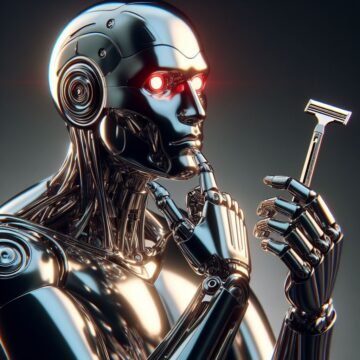
Recently, the exponential growth of AI capabilities has been outpaced only by the exponential growth of breathless claims about their coming capabilities, with some arguing that performance on par with humans in every domain (artificial general intelligence or AGI) may only be seven months away, arriving by November of this year. My purpose in this article is to examine the plausibility of this claim, and, provided ‘AGI’ includes the ability to know what you’re talking about, find it wanting. I will do so by examining the work of British philosopher and logician Bertrand Russell—or more accurately, some objections raised against it.
Russell was a master of structure in more ways then one. His writing, the significance of which was recognized with the 1950 Nobel Prize in literature, is often a marvel of clarity and coherence; his magnum opus Principia Mathematica, co-written with his former teacher Alfred North Whitehead, sought to establish a firm foundation for mathematics in logic. But for our purposes, the most significant aspect of his work is his attempt to ground scientific knowledge in knowledge of structure—knowledge of relations between entities, as opposed to direct acquaintance with the entities themselves—and its failure as originally envisioned.
Structure, in everyday parlance, is a bit of an inexact term. A structure can be a building, a mechanism, a construct; it can refer to a particular aspect of something, like the structure of a painting or a piece of music; or it can refer to a set of rules governing a particular behavioral domain, like the structure of monastic life. We are interested in the logical notion of structure, where it refers to a particular collection of relations defined on a set of not further specified entities (its domain).
It is perhaps easiest to approach this notion by means of a couple of examples. Read more »
Monday Photo
Two Revolutionary War Proclamations Freeing the Enslaved
by Terese Svoboda
The Slavs inspired the word “slave.” Abductions in Eastern Europe began in the ninth century AD conducted by Spanish Muslims, and the area is still plagued by human trafficking (especially children), with a million more victims per year than in the Americas. [1] My surname means freedom in Ukrainian, Russian and Czech. My ancestors flaunted their liberty at a time when many others were being enslaved – or were they once enslaved and took on this patronymic after they escaped slavery, or were they freed? Many Blacks in the US took on the name Freedman or Freeman after the Civil War.[2]

Few know that Blacks were freed twice before the end of the American Revolution. Eighty-seven years prior to the Emancipation Proclamation, in November, 1775, during the year before the Declaration of Independence, Dunmore’s Proclamation ordered the slaves freed in Virginia. Lord Dunmore, the royal governor of Virginia, was cornered by colonists on a ship in the Norfolk harbor with only 300 soldiers at the time. His proclamation did not stem from any moral or religious objections to slavery. As governor of Virginia, he had withheld his signature from a bill against the slave trade. He simply wanted help – to use Blacks to protect the Loyalists.
Only months before, Dunmore had been quite popular with all Virginians, Loyalists and patriots, as victor of the Battle of Point Pleasant. Marching alongside a thousand of his ragtag backwoodsmen, he routed the area’s Native Americans, opening up a huge area of West Virginia and Ohio for settlement and speculation. Although treaties had been in place for some time, Dunmore ignored them.[3] George Washington, head engineer of the frontier fort construction on the West Virginia/Ohio border, had purchased quite a bit of its acreage, and like the other developers in the area, wanted the Native Americans gone. No freedom for them. Forced to abandon hundreds of acres of corn and semi-permanent homes, the Native Americans were not counted as “brave and free people” that the Virginians declared themselves to be in their many Resolves published in response to Lord Dunmore’s Proclamation a year later. Read more »
Midwood to Belfast and Beyond: A Memoir Begins (Working Title)
by Barbara Fischkin

Moving forward, I plan to use this space to experiment with chapters of a memoir. Please join me on this journey. Another potential title: “Barbara in Free-Range.” I realize this might be stepping on the toes of Lenore Skenazy, the celebrated former New York News columnist, although I don’t think she’d mind. Lenore was also born a Fishkin, albeit without a “c” but close enough. We share a birthday and the same sensibilities about childhood. These days Lenore uses the phrase “free-range,” typically applied to eggs, to fight for the rights of children to explore on their own as opposed to being over-supervised and scheduled.
I feel free-range, myself. I don’t like rules, particularly the unnecessary and ridiculous ones. My friend Dena Bunis, who recently died suddenly and too soon, once got a ticket for jaywalking on a traffic-free bucolic street in Orange County, California. She never got a jaywalking ticket in other far more congested places like New York City and Washington, D.C.
As a kid, I was often free-range, thanks to my parents, old timers blessed with substantial optimism. I have been a free-range adult. I was a relatively well-behaved teen but did not become a schoolteacher as recommended as a good job for a future wife and mother. I wanted a riskier existence as a newspaper reporter. I did not marry the doctor or lawyer envisioned as the perfect husband for me by ancillary relatives and a couple of rabbis. Instead, I married Jim Mulvaney, now my Irish Catholic spouse of almost forty years, because I knew he would lead, join or follow me into adventures.
I left newspapering as my career was blooming to write books, none of which made me a literary icon or even a little famous. I am glad I wrote them. Read more »
Sunday, March 31, 2024
A reconsideration of Robert Frost at 150
Ed Simon in The Hedgehog Review:
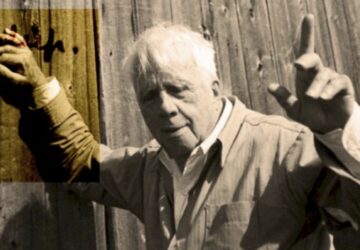 Despite the stereotype of being the Norman Rockwell of verse, Robert Frost’s standing, even sixty-one years after his death, remains blue-chip, still perhaps the most famous American poet among the general public. Frost’s work remains anthologized and interpreted, and taught in secondary and undergraduate classrooms; his lyrics among the handful that can be expected to be namedropped as a reader’s favorite poem (two roads and all of that). If anything, Frost has suffered from the albatross of presumed accessibility. Among the luminaries of American Modernism, Ezra Pound was experimental, T.S. Eliot cerebral, H.D. hermetic, Langston Hughes revolutionary, Wallace Stevens incandescent, and William Carlos Williams visionary, but Frost is readable. David Orr writes in his excellent book-length close reading The Road Not Taken: Finding America in the Poem Everyone Loves and Almost Everyone Gets Wrong (2015) that Frost is a poet whose “signature phrases have become so ubiquitous, so much a part of everything from coffee mugs to refrigerator magnets to graduation speeches” that it can become easy to forget the man who penned such phrases.
Despite the stereotype of being the Norman Rockwell of verse, Robert Frost’s standing, even sixty-one years after his death, remains blue-chip, still perhaps the most famous American poet among the general public. Frost’s work remains anthologized and interpreted, and taught in secondary and undergraduate classrooms; his lyrics among the handful that can be expected to be namedropped as a reader’s favorite poem (two roads and all of that). If anything, Frost has suffered from the albatross of presumed accessibility. Among the luminaries of American Modernism, Ezra Pound was experimental, T.S. Eliot cerebral, H.D. hermetic, Langston Hughes revolutionary, Wallace Stevens incandescent, and William Carlos Williams visionary, but Frost is readable. David Orr writes in his excellent book-length close reading The Road Not Taken: Finding America in the Poem Everyone Loves and Almost Everyone Gets Wrong (2015) that Frost is a poet whose “signature phrases have become so ubiquitous, so much a part of everything from coffee mugs to refrigerator magnets to graduation speeches” that it can become easy to forget the man who penned such phrases.
More here.
Sean Carroll: The Coming Transition in How Humanity Lives
Sean Carroll in Preposterous Universe:
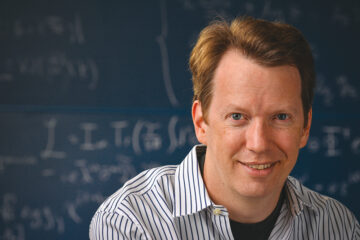 Technology is changing the world, in good and bad ways. Artificial intelligence, internet connectivity, biological engineering, and climate change are dramatically altering the parameters of human life. What can we say about how this will extend into the future? Will the pace of change level off, or smoothly continue, or hit a singularity in a finite time? In this informal solo episode, I think through what I believe will be some of the major forces shaping how human life will change over the decades to come, exploring the very real possibility that we will experience a dramatic phase transition into a new kind of equilibrium.
Technology is changing the world, in good and bad ways. Artificial intelligence, internet connectivity, biological engineering, and climate change are dramatically altering the parameters of human life. What can we say about how this will extend into the future? Will the pace of change level off, or smoothly continue, or hit a singularity in a finite time? In this informal solo episode, I think through what I believe will be some of the major forces shaping how human life will change over the decades to come, exploring the very real possibility that we will experience a dramatic phase transition into a new kind of equilibrium.
More here.
A defining feature of modern activism: “The ever-present, neurotic need to be recognized and affirmed”
Julia Friedman in Quillette:
 On my last visit to the National Gallery in London in October 2022, during Frieze Week, the wall beneath Vincent Van Gogh’s iconic Sunflowers still displayed noticeable palm-sized daubs of unmatched gray paint. The day before, Just Stop Oil protestors Phoebe Plummer, and Anna Holland had glued themselves to that wall, after dousing the painting with Heinz tomato soup. Their timing (Frieze Week) and venue for this instance of performative activism was not incidental. It pitted the purported excess of attention given to art—here represented by Van Gogh’s masterpiece—against the scarcity of “food” and “justice” for those affected by rampant inflation. In this zero-sum scenario, a choice had to be made between culture and human beings: “Are you more concerned about the protection of a painting, or the protection of our planet and people?” demanded Plummer, as she knelt beneath the soup-stained still life, one palm already affixed to the wall behind her. The efficacy of this attack, news of which quickly spread across both legacy and social media, derived from the cult status of Sunflowers: its cultural cachet, its recognizability and ubiquity. Yet Plummer and Holland saw it only as a prop for acting out their scripted and rehearsed demonstration.
On my last visit to the National Gallery in London in October 2022, during Frieze Week, the wall beneath Vincent Van Gogh’s iconic Sunflowers still displayed noticeable palm-sized daubs of unmatched gray paint. The day before, Just Stop Oil protestors Phoebe Plummer, and Anna Holland had glued themselves to that wall, after dousing the painting with Heinz tomato soup. Their timing (Frieze Week) and venue for this instance of performative activism was not incidental. It pitted the purported excess of attention given to art—here represented by Van Gogh’s masterpiece—against the scarcity of “food” and “justice” for those affected by rampant inflation. In this zero-sum scenario, a choice had to be made between culture and human beings: “Are you more concerned about the protection of a painting, or the protection of our planet and people?” demanded Plummer, as she knelt beneath the soup-stained still life, one palm already affixed to the wall behind her. The efficacy of this attack, news of which quickly spread across both legacy and social media, derived from the cult status of Sunflowers: its cultural cachet, its recognizability and ubiquity. Yet Plummer and Holland saw it only as a prop for acting out their scripted and rehearsed demonstration.
To the casual observer, this stagy use of an artwork as a backdrop for an ideological statement might have little in common with another, much subtler case when a different National Gallery painting served as a prop. This time there was no super glue, tomato soup, or declarative recitations, and no need to involve security.
More here.
Mohsin Hamid: Cracks in Concrete
Mohsin Hamid at Georgetown University Global Dialogues:
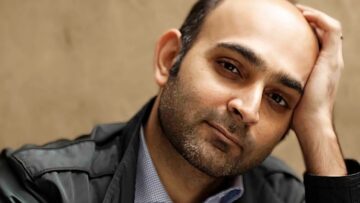 When it comes to our understanding of the world, we are all like the blind men in the story of the blind men and the elephant. We each know the elephant from our own small vantage point, and what we know is partial and prone to distortions. It is from speaking to one another, reading one another, that a more accurate picture appears. Unfortunately, too often, those we speak to and read come from places very close to ours, whether physically or ideologically, and so the elephant we see together looks to us uncannily like something else, like a wall or a weapon or a trophy, perhaps. I would like to describe the elephant, the world, as I perceive it from my vantage point in Lahore, Pakistan, in the early months of the year 2024. I do this in the hope that each of us, in describing it, helps all of us see it a little better.
When it comes to our understanding of the world, we are all like the blind men in the story of the blind men and the elephant. We each know the elephant from our own small vantage point, and what we know is partial and prone to distortions. It is from speaking to one another, reading one another, that a more accurate picture appears. Unfortunately, too often, those we speak to and read come from places very close to ours, whether physically or ideologically, and so the elephant we see together looks to us uncannily like something else, like a wall or a weapon or a trophy, perhaps. I would like to describe the elephant, the world, as I perceive it from my vantage point in Lahore, Pakistan, in the early months of the year 2024. I do this in the hope that each of us, in describing it, helps all of us see it a little better.
The first thing that strikes me about the world is that it is has become poisonous. We cannot breathe. From November until February the blue sky is hidden behind a low ceiling of grey. This is not from clouds but from smoke. It is uncanny to take a flight in these months, to burst only seconds after take-off into the blindingly bright light and see not a city but a grey blanket below.
More here.

